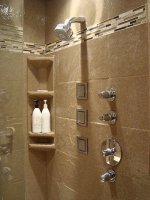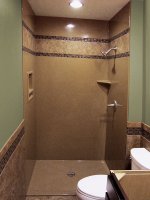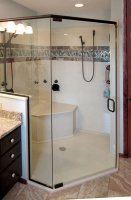I like a tiled shower, but the industry standards setter (TCNA) says 70-80% of them are not installed properly. It work fine and lasts a long time IF it is done correctly according on one of the accepted industry standards, isn't really all that hard, but is VERY detail oriented...mess with one point, and it can cause a failure, some of which can take a long time to exhibit themselves.
Even installing a premade pan has it's problem if it isn't done right. Given the choices, if I went that route, I'd probably go with either a solid surface material (synthetic stone like Corian), or cast iron.
There are lots of ways to build an acceptable tiled shower. I prefer the TCNA build method B422, which uses a surface applied boned membrane. Instead of a preslope, liner, setting bed, then tile, it uses a preslope, and a waterproof membrane that has the tile bonded directly to it. This goes up the walls as well, so that there is very little that can get wet or stay that way.
Keep in mind, a correctly built shower is, or should be, water-tight before even the tile is installed. Some people forget that fact. IOW, the tile is NOT the waterproof surface, it is what's underneath, the tile is the decorative, wear surface.
To give you an example of one company who makes materials to do this (they are not the only one, but are the oldest using B422) is
www.schluter.com check out the Kerdi shower handbook and view a video or two.
If you want to go that route, you might want to post a query at
www.johnbridge.com in their professional's corner and ask if they have any member in your area.



